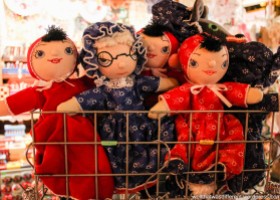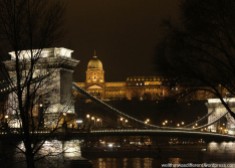Even though Budapest is just a couple of hours from Vienna by car, it kept dropping off our travel itinerary due to Italy various logistical issues. Finally, for my husband’s birthday, I arranged a quick trip–with a stay in a luxury hotel for the icing on the cake.
For some reason, I expected Budapest to be a twin to Vienna. You know, Austro-Hungarian empire and all that. It is, to a point. If twins had been separated at birth, and one handed over to an uptight, but wealthy and respectable family to raise, and the other to a friendly, but seriously dysfunctional, poverty-stricken family who speaks their own, very peculiar language, then you’d get something like Vienna and Budapest.
Budapest’s imperial heritage is still very much in evidence, but it is seriously battered by history. I don’t think it was bombed as much as Vienna was in WWII, but the Communist government that followed was even more neglectful of infrastructure than they were in Prague. The 1956 uprising, during which the Soviets ran roughshod over the city, didn’t help. Beautiful 19th century and Secession-era buildings are falling to pieces all over the city. Looking to buy a mansion, cheap? Check out Budapest, where they are going begging.
Even the subway system, normally the pride of any Communist dictatorship, is industrial, dilapidated, and honestly kind of scary to ride. Cars shake, brakes screech, creaky wooden escalators hurtle downward, and the ticket system clearly has not been updated since the 1970s. An overabundance of transit employees stand around every entry and exit point, and homeless people camp out in the stations. I can’t blame them: though we actually went south to get to Budapest, it was cold (and damp) enough there to freeze the brass whatsit off a monkey. I swear, I was halfway back to Vienna before I could feel my toes again.
All that said, there is much to love about this dirty old town. The Christmas markets were lots of fun with Turkish and Roma music playing, and lots of nice handicrafts at very reasonable prices. In part because Hungarian is so impenetrable, English is widely spoken, and most signs, menus, and museum information is in both Hungarian and English. People in general were very friendly, and the service at restaurants and at the (very comfortable) hotel was great.
Finally, the food is much more Balkan than Central European–and I mean that in a good way! We enjoyed spicy kebabs with actual vegetables in the markets, a truly gourmet Hungarian meal with excellent local wine in one restaurant, and a delicious, fresh, authentically Italian meal in another. All for about 50 percent less than we would have paid in Vienna. I only saw one sign advertising schnitzel (in German) the whole time we were there. No doubt about it: the food was the best surprise of this visit!
Some photos from around town. Communist statuary to follow in my next post!




































As always, beautiful pix.
Victoria Hess Victoria@writehess.com Tablets Bring Brevity
LikeLike
I enjoyed your summary of Budapest and Vienna. Great humor.
LikeLike